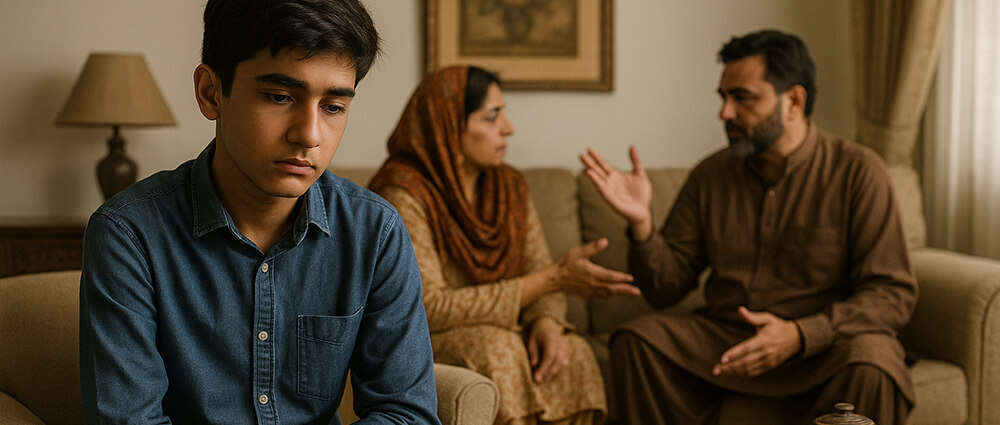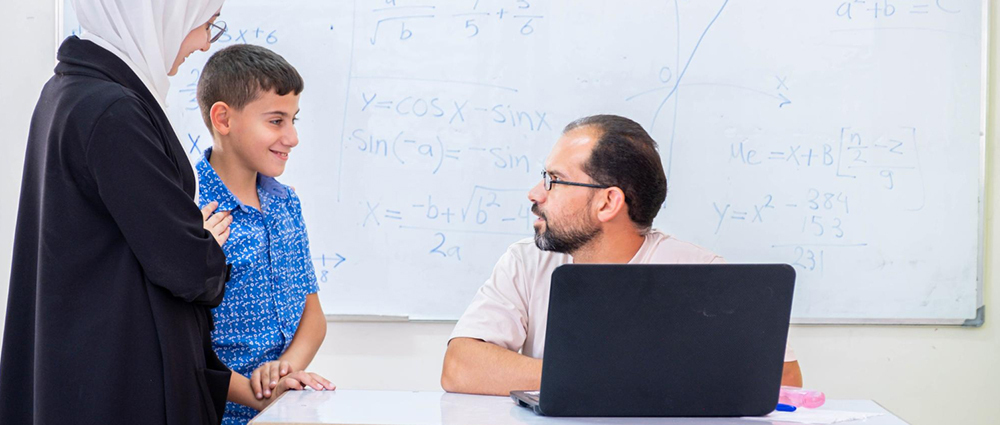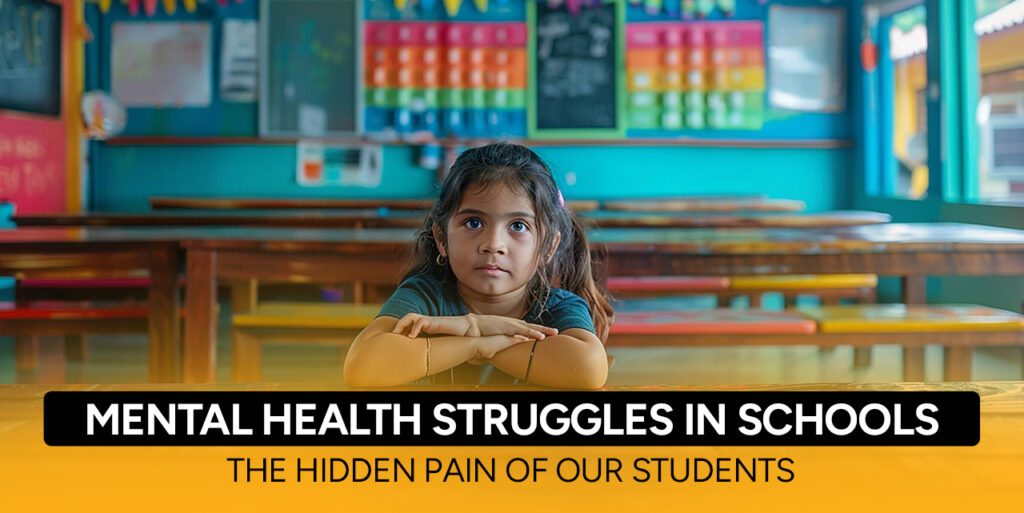Unpacking the emotional battles faced by children behind the classroom walls
When we think about school, what comes to mind? Probably the sound of the school bell, classrooms full of chatter, students with backpacks, and teachers writing on the blackboard. But beneath the surface of this seemingly normal environment lies a growing crisis: mental health issues in students in Pakistan.
This is not just about feeling sad after a bad grade or nervous before a test. It’s deeper. It’s about the silent emotional struggles, the anxiety that never seems to go away, and the isolation that many students face every day, all while being expected to smile, perform, and act normally.
The Emotional Burden No One Talks About

This kind of statement is more common in South Asia- ‘Be strong, or be grateful because you are going to school,’ or that you are privileged to have access to education. However, in all this, the emotional well-being of the school children is neglected. That means a teenager would wake every morning with not a load from school on their shoulders, but an undefined invisible thing pulling him/her down.
In Pakistan, children and teenagers who are suffering from psychological problems remain unheard and unseen because the discussion about mental health is still considered a taboo subject. Teenagers are becoming anxious and depressed, and the sad part, of course, is these are real, rising, and deeply alarming realities.
What Are the Signs We’re Missing?
Many students don’t even realize they’re going through mental health challenges. They might think it’s just a phase or something they’ll grow out of. But here are some common signs of mental health struggles in children that parents and teachers need to watch out for:
- Sudden changes in behavior
- Lack of focus or decline in academic performance
- Trouble sleeping or eating habits
- Constant fatigue or unexplained physical complaints
- Loss of interest in activities they once enjoyed
- Panic attacks, excessive worry, or hopelessness
These signs are not attention-seeking behavior. They’re quiet cries for help.
So, What’s Happening in Our Schools?

The truth is, mental health support in Pakistani schools is still very far from up to mark. Most institutions are still more concerned with the grades and the discipline than with emotional development.
Unfortunately, most schools will treat emotional struggle as some sort of personal problem rather than labeling it as lazy or behavior issues related to the child involved.
Very few schools in the country have trained counselors or school counseling programs in place. And even when they do have mental health support available, it tends to be underfunded, underutilized, or not well understood.
And even if students do seek counseling, it is likely because of fear or the judgment associated with being labeled or, worse, being punished.
In terms of mental health awareness programs/workshops and counseling sessions, there has been some progress in private schools in recent years. But when we talk about government schools, especially in the rural areas, the concept of mental health awareness in schools is almost close to non-zero.
The Pressure Cooker Effect
Let’s not forget the intense pressure students face to excel academically, make their families proud, get into the best universities, and secure a future in a competitive job market. The result? A mental health time bomb.
Across South Asia, and particularly in Pakistan, we are seeing a rise in student depression and anxiety, sometimes leading to tragic outcomes like self-harm or even suicide. And yet, we still hesitate to say the words “mental illness” out loud in classrooms.
What Needs to Change?
It starts with listening. Students don’t need us to always solve their problems; they need us to see them, to acknowledge their pain, and to create a safe space for them.
Here’s what schools and parents can do:
Introduce school counseling programs with trained professionals who understand child and adolescent psychology
Conduct mental health awareness workshops for both students and staff
Encourage open discussions about emotional health without shame or fear
Train teachers to recognize signs of emotional distress and how to handle them
Provide safe outlets, like art therapy, journaling, or peer groups, where children can express themselves
Include mental health education in the school curriculum, just like physical health
Let’s Not Wait for a Crisis
If a child had a fever, we’d take them to the doctor. So why is it so hard to do the same when their mind is hurting?
Addressing mental health issues in students in Pakistan isn’t a luxury; it’s a necessity. We owe it to our children to make schools not just centers of learning, but also spaces of healing, support, and care.
To know more about the different mental struggles that children face, watch the documentary Decode at Rava Documentary Films.

